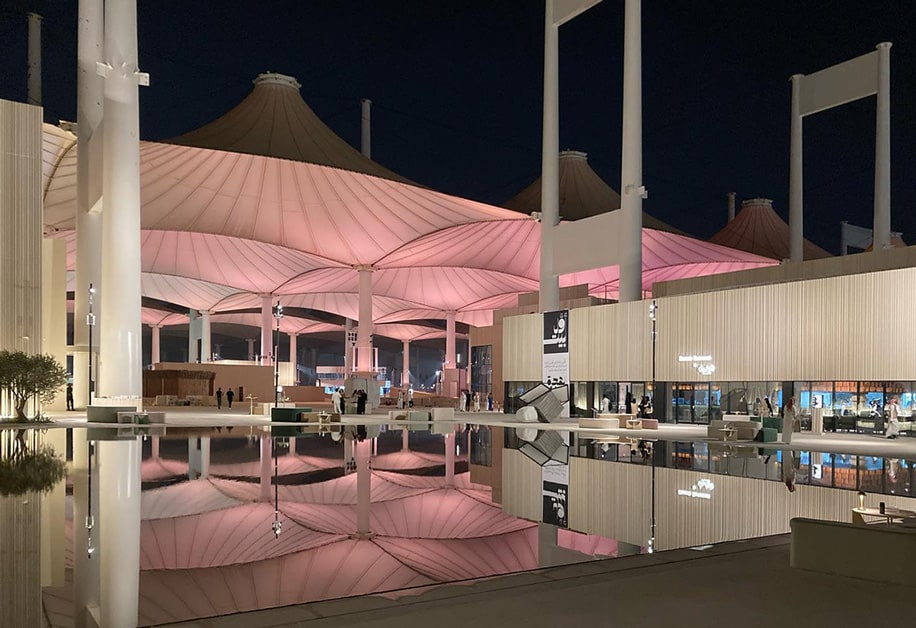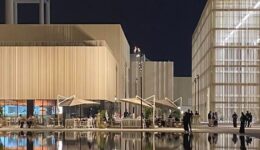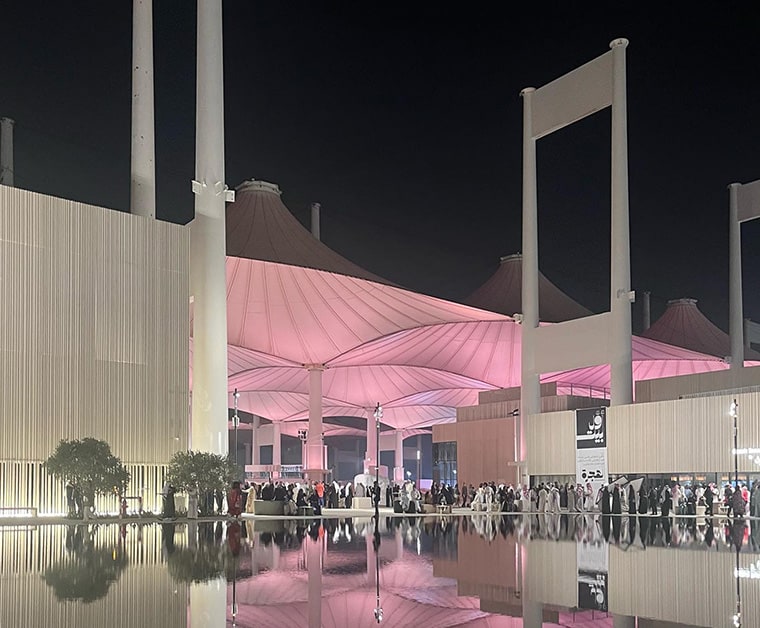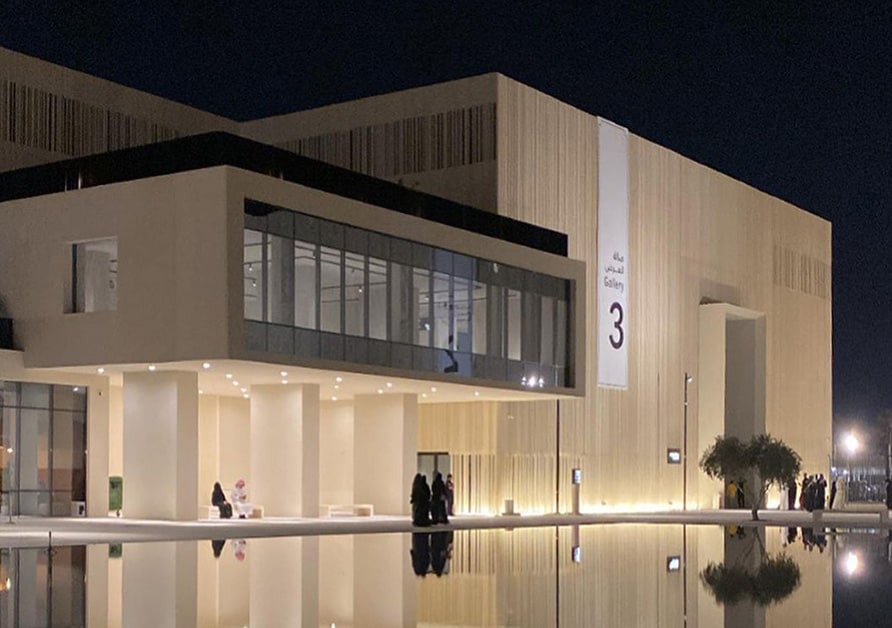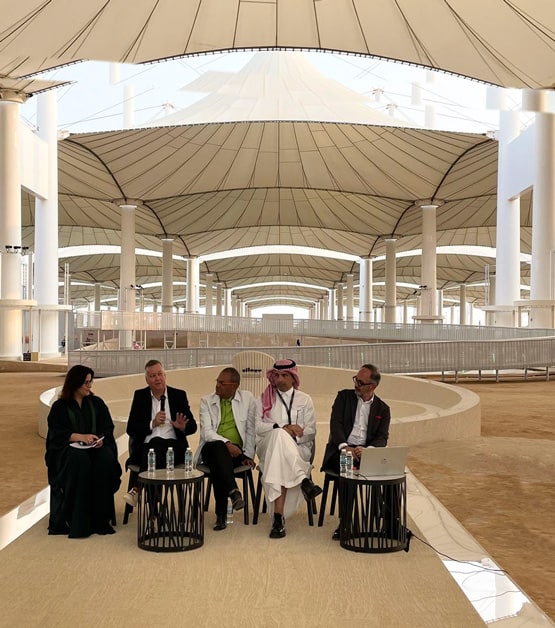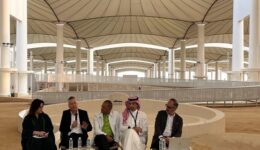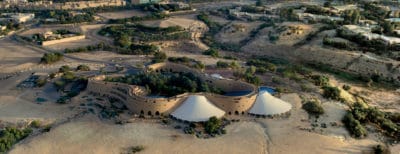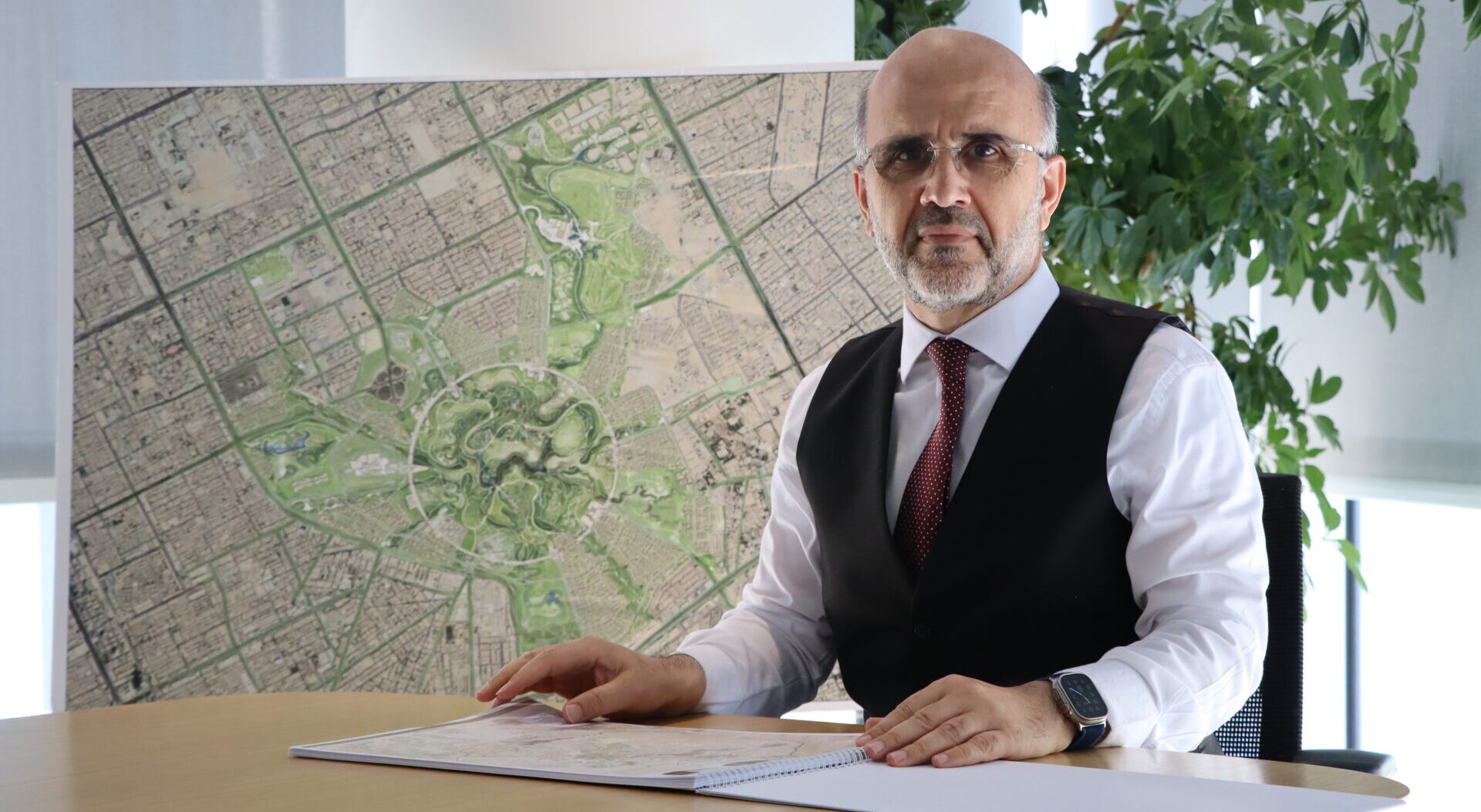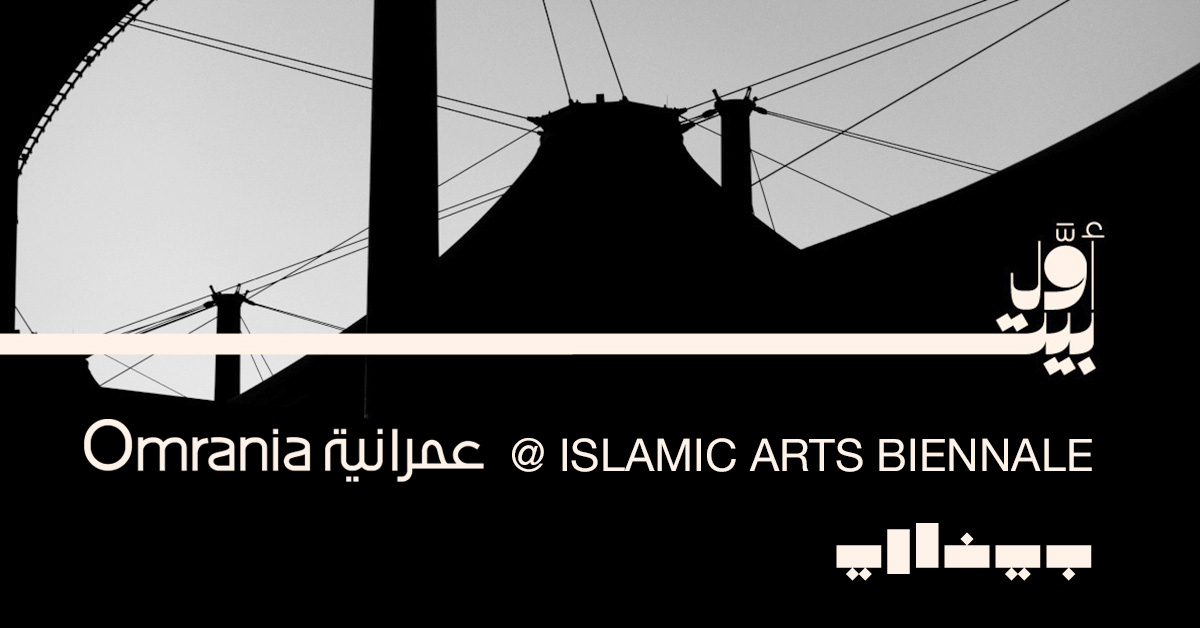 Omrania Participates in Islamic Arts Biennale 2023 in Jeddah, Saudi Arabia.
Omrania Participates in Islamic Arts Biennale 2023 in Jeddah, Saudi Arabia. .
Marking a watershed moment for art and culture in Saudi Arabia, the first edition of the Islamic Arts Biennale celebrates cultural, intellectual, and artistic achievements that trace their origins to the House of Allah, Awwal Bait (“First House”). Omrania participated in a panel discussion about design innovation on the Biennale’s opening day.
The Diriyah Biennale, alternating annually between a focus on Islamic Arts and Contemporary Art, launched this year with an ambitious curatorial program exploring the timeless rituals of Islam through movement, sound, and invisible lines of direction. The Biennale is being staged in a newly built, 70,000-square-meter venue beneath the canopy of the iconic Hajj Terminal of King Abdulaziz International Airport in Jeddah.
On the opening day of the Biennale, 23 January 2023, Omrania participated in a panel discussion dedicated to the future of design innovation in the Kingdom and beyond. Mr. Mahmoud Abu Ghazal, Omrania’s Design Director, participated in the panel discussion alongside Dr. Sumayah Al-Solaiman, CEO of the Architecture and Design Commission at the Ministry of Culture; Farrokh Derakhshani Director of the Aga Khan Award for Architecture; Hanif Kara OBE, recent winner of the Fazlur R. Khan Lifetime Achievement Award; and Thomas Behr of Skidmore, Owings & Merrill.
The panel was titled, “Saudi Arabia as a Place of Design Innovation — Aga Khan Award for Architecture Conversation.” Omrania, involved today with many of the most ambitious design and development projects in the Kingdom, was part of the team that designed the Tuwaiq Palace, which received the Aga Khan Award for Architecture in 1998.
Tuwaiq Palace shares innovative and contextual design aspects with the Hajj Terminal, designed by SOM, which was completed in 1982 and received the Aga Khan Award in 1983. Both structures balance modern and traditional building technologies in dramatic and intelligent ways, employing lightweight tensile structures to varying ends. Whereas Tuwaiq Palace is an exclusive diplomatic and cultural facility that integrates high-tech canopies with curving stone walls and a lush oasis garden, the Hajj Terminal—designed as the world’s largest fabric structure enclosing the world’s largest covered space—is a public gateway to the Kingdom of Saudi Arabia, accommodating 500,000 pilgrims annually.
The jury of the Aga Khan Award praised the design of the Hajj Terminal’s roofing system, “which met the awesome challenge of covering this vast space with incomparable elegance and beauty,” adding, “The Hajj Terminal structure has pushed known building technology beyond its established limits while demonstrating that such a massive structure can still be light and airy, a twentieth-century echo of the traditional tent structures that have worked so well in desert climates.” Fazlur Rahman Khan was the lead structural engineer on behalf of SOM.
The selection of the Hajj Terminal as the permanent home of the Biennale represents a worthy reinvestment in this important work of modern architecture and engineering. According to the Diriyah Foundation, “the Biennale is poised to further enrich the Hajj Terminal’s functional and spiritual relevance, transforming it into a hub for celebrating Islamic arts and culture, and fostering Jeddah’s local arts ecosystem throughout the year.” Exhibition spaces, workshops, a theater, classrooms, and retail and dining spaces are among the Biennale’s new facilities constructed beneath the terminal’s canopy.
Omrania applauds the adaptive reuse of the Hajj Terminal into a cultural space that will serve the city, region, country, and Islamic world. To read about Omrania’s Design Ethos—our approach to creating places that are functional, livable, contextual, sustainable, and beautiful—see our posts on the multiple meanings of function in architecture and resource-effective design.






